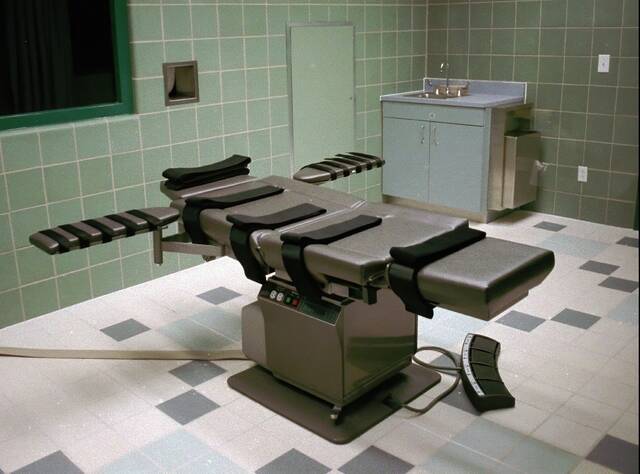Any budget-aware, environmentally conscious consumer scouting out new appliances knows to look for the Energy Star label.
The familiar blue-and-white logo – stuck on refrigerators, stoves, dishwashers, heat pumps, washers, dryers, water heaters and air conditioners – signifies cost savings and efficiency.
But the program, run by the U.S. Environmental Protection Agency, could be in jeopardy, according to major media outlets.
CNN broke the news last week about the Trump Administration’s plans to shut down Energy Star as part of an EPA reorganization.
President Donald Trump is looking to do away not only with the EPA’s Energy Star division but also with a division focused on climate change, CNN reported.
Shutting down Energy Star would be bad for the public, according to New York Times “Your Money” columnist Ron Lieber.
“It’s a useful seal of approval, a signal of outsize efficiency and the lower utility bills that you’ll pay over time,” Lieber wrote.
Pointing to a document on the EPA website, Lieber says the government claims $500 billion in savings for homes and businesses over the past three decades.
The Associated Press brought the savings closer to home for readers, noting the program says a household with Energy Star products can save $450 a year through lower energy costs.
According to Sarah Gleeson, climate solutions research manager at the climate action nonprofit Project Drawdown, if Energy Star disappears, it will be more difficult for consumers to have trustworthy information about products’ energy use, the AP reported.
Details about the proposed overhaul of the EPA are skimpy.
“The EPA did not confirm directly it was ending the program…” the AP reported, “but said the reorganization ‘is delivering organizational improvements to the personnel structure that will directly benefit the American people and better advance the agency’s core mission, while Powering the Great American Comeback.’”
The New York Times also reported the planned cuts, citing agency documents and a recording of an internal meeting.
“EPA managers announced during a staff meeting on Monday that divisions that oversee climate change and energy efficiency would be eliminated as part of an agency reorganization,” the newspaper reported on May 6. “That includes the EPA’s climate change office as well as the division that oversees Energy Star.”
The Washington Post similarly reported on the Trump team’s intentions, citing three people briefed on the matter as well as slide presentations obtained by Democrats on the Senate Environment and Public Works Committee.
The Post reported that the fate is unknown of federal tax credits for home builders who build to Energy Star standards and homeowners who make energy efficient upgrades, such as installing certain kinds of doors, windows and skylights.
Outlier in the White House
The idea of doing away with Energy Star isn’t a new one for Trump, according to CNN.
He floated the idea during his first administration, the network said.
Trump appears to be an outlier among occupants of the Oval Office.
“It’s had widespread support from all presidents except for Trump,” Steve Nadel, executive director of the American Council for an Energy-Efficient Economy, told the New York Times.
The program has also enjoyed bipartisan support, and with good reason.
CNN described Energy Star as “a longstanding public-private partnership certifying energy efficient appliances and helping consumers find products and tax credits to bring down the cost of energy efficient appliances.”
More than 1,000 companies, organizations and cities – including Philadelphia – last month wrote to EPA Administrator Lee Zeldin in support of the program, according to Politico’s E&E News publication.
“A fully funded Energy Star program is particularly important for meeting the Trump administration’s goal of reducing Americans’ energy bills,” the letter said. “Our companies have devoted considerable time and resources to partnering with Energy Star because it works for business. We respectfully urge you to stand with us in support of Energy Star by ensuring that it remains well-funded and expertly staffed at EPA.”
The Sierra Club, one of the nation’s foremost environmental groups, issued a less diplomatic statement to the AP.
“For an administration who keeps claiming the country is facing an ‘energy emergency,’ Trump continues to attack any and all efforts aimed at saving energy through efficiency,” Xavier Boatright, deputy legislative director for clean energy and electrification at Sierra Club, said in a statement to the news agency.
Santa Claus-level recognition
Energy Star launched in 1992 under President George H.W. Bush. Its label “provides simple, credible, and unbiased information that consumers and businesses rely on to make well-informed decisions,” according to the Energy Star website.
Energy Star is so ubiquitous, nearly 90% of American consumers recognize it, the New York Times said, citing the government.
“It’s an easy way for them to identify high energy-efficiency equipment,” Nadel told the newspaper.
“It has brand recognition and consumer trust that only Santa Claus can compete with,” Christine Egan, head of Collaborative Labeling and Appliance Standards Program, an international nonprofit dedicated to energy-efficient appliances, told the Washington Post.
The EPA and its private-sector partners – including almost 40 of Fortune 500 companies – “deliver cost-saving energy efficiency solutions that protect the environment, improve air quality and protect public health,” the program said.
“Eliminating the Energy Star program would directly contradict this administration’s promise to reduce household energy costs,” Paula Glover, president of the nonprofit coalition Alliance to Save Energy, told CNN. “For just $32 million a year, Energy Star helps American families save over $40 billion in annual energy costs. That’s a return of $350 for every federal dollar invested.”
The program has powerful allies on Capitol Hill.
CNN reported that U.S. Sen. Susan Collins, R-Maine, chair of the Senate Appropriations Committee, said the Trump administration’s decision to eliminate Energy Star left her “baffled.”
“I know that my constituents like knowing what the energy usage is of a particular appliance so that they can factor that into their buying decisions,” Collins told CNN.
If Energy Star evaporates, consumers can still find some appliance efficiency guidance in the bright yellow EnergyGuide stickers overseen by the Federal Trade Commission, according to the Washington Post.
There are downsides, however.
Nadel told the Post EnergyGuide is not as “clear or effective” as Energy Star. It covers fewer appliances and its information is outdated, he told the newspaper.
That said, according to the Post, “you can use the label to guide you toward appliances on the more efficient end of the spectrum.”








